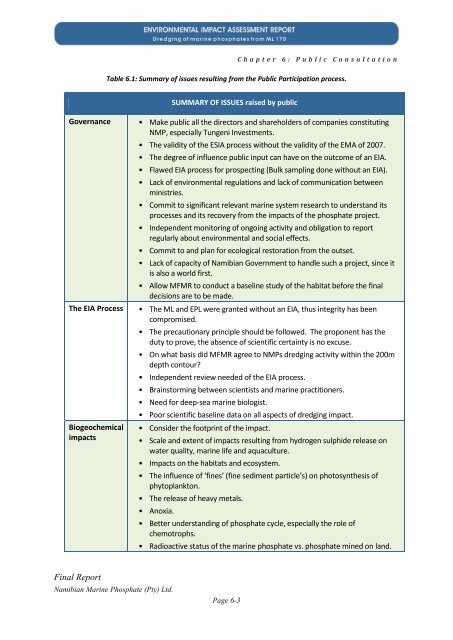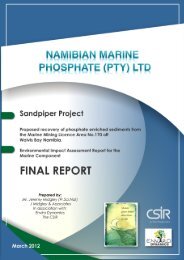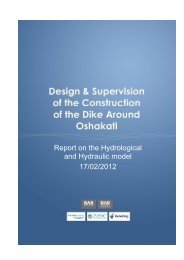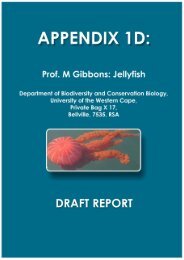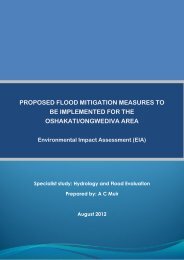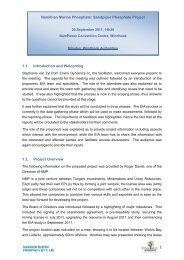Public Consultation - Enviro Dynamics Namibia
Public Consultation - Enviro Dynamics Namibia
Public Consultation - Enviro Dynamics Namibia
- No tags were found...
Create successful ePaper yourself
Turn your PDF publications into a flip-book with our unique Google optimized e-Paper software.
Chapter 6 : <strong>Public</strong> <strong>Consultation</strong>Table 6.1: Summary of issues resulting from the <strong>Public</strong> Participation process.SUMMARY OF ISSUES raised by publicGovernanceThe EIA ProcessBiogeochemicalimpacts• Make public all the directors and shareholders of companies constitutingNMP, especially Tungeni Investments.• The validity of the ESIA process without the validity of the EMA of 2007.• The degree of influence public input can have on the outcome of an EIA.• Flawed EIA process for prospecting (Bulk sampling done without an EIA).• Lack of environmental regulations and lack of communication betweenministries.• Commit to significant relevant marine system research to understand itsprocesses and its recovery from the impacts of the phosphate project.• Independent monitoring of ongoing activity and obligation to reportregularly about environmental and social effects.• Commit to and plan for ecological restoration from the outset.• Lack of capacity of <strong>Namibia</strong>n Government to handle such a project, since itis also a world first.• Allow MFMR to conduct a baseline study of the habitat before the finaldecisions are to be made.• The ML and EPL were granted without an EIA, thus integrity has beencompromised.• The precautionary principle should be followed. The proponent has theduty to prove, the absence of scientific certainty is no excuse.• On what basis did MFMR agree to NMPs dredging activity within the 200mdepth contour?• Independent review needed of the EIA process.• Brainstorming between scientists and marine practitioners.• Need for deep-sea marine biologist.• Poor scientific baseline data on all aspects of dredging impact.• Consider the footprint of the impact.• Scale and extent of impacts resulting from hydrogen sulphide release onwater quality, marine life and aquaculture.• Impacts on the habitats and ecosystem.• The influence of ‘fines’ (fine sediment particle’s) on photosynthesis ofphytoplankton.• The release of heavy metals.• Anoxia.• Better understanding of phosphate cycle, especially the role ofchemotrophs.• Radioactive status of the marine phosphate vs. phosphate mined on land.Final Report<strong>Namibia</strong>n Marine Phosphate (Pty) Ltd.Page 6-3


